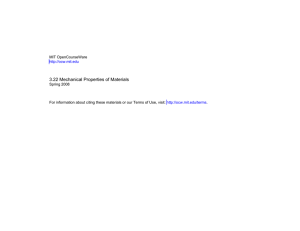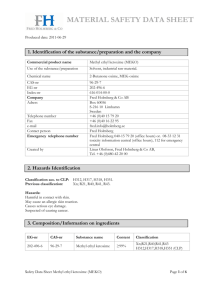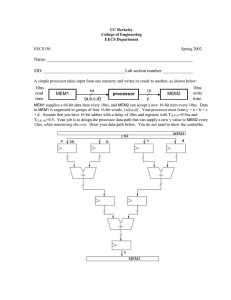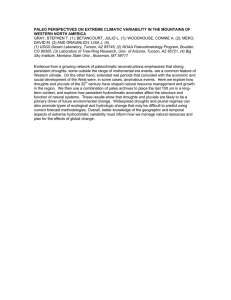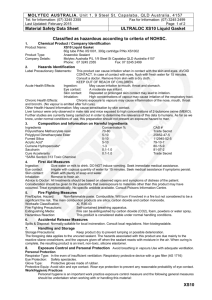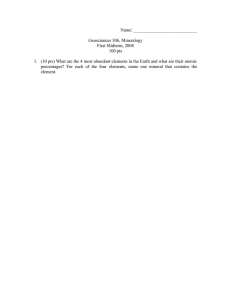Methyl Ethyl Ketoxime (MEKO)
advertisement
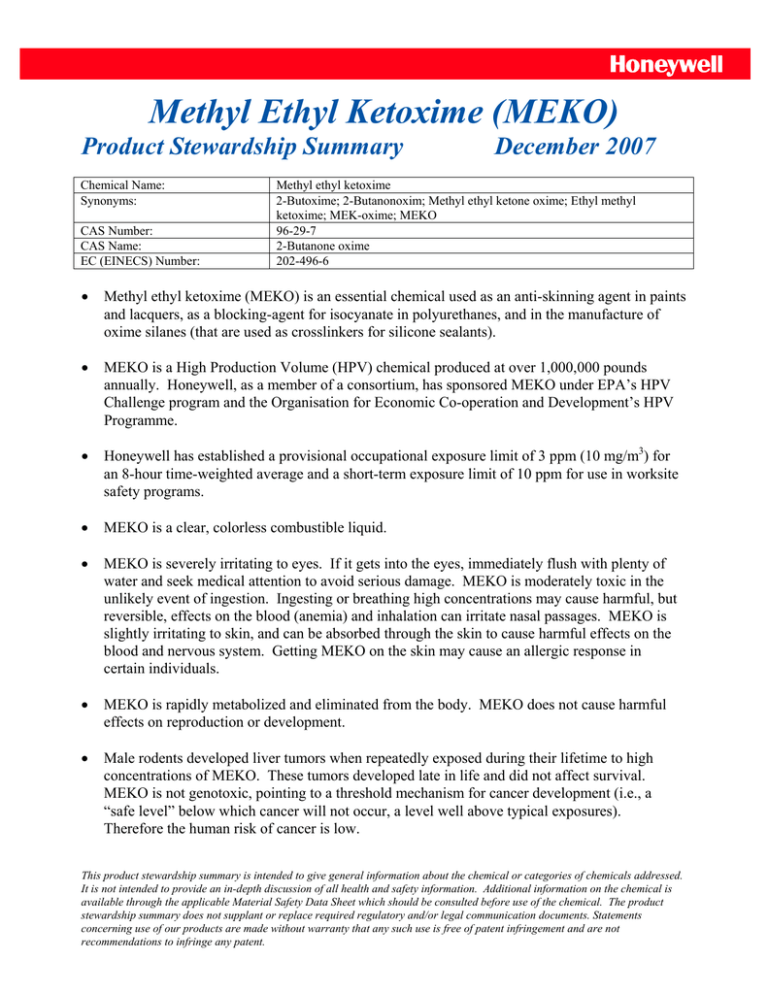
Methyl Ethyl Ketoxime (MEKO) Product Stewardship Summary Chemical Name: Synonyms: CAS Number: CAS Name: EC (EINECS) Number: December 2007 Methyl ethyl ketoxime 2-Butoxime; 2-Butanonoxim; Methyl ethyl ketone oxime; Ethyl methyl ketoxime; MEK-oxime; MEKO 96-29-7 2-Butanone oxime 202-496-6 • Methyl ethyl ketoxime (MEKO) is an essential chemical used as an anti-skinning agent in paints and lacquers, as a blocking-agent for isocyanate in polyurethanes, and in the manufacture of oxime silanes (that are used as crosslinkers for silicone sealants). • MEKO is a High Production Volume (HPV) chemical produced at over 1,000,000 pounds annually. Honeywell, as a member of a consortium, has sponsored MEKO under EPA’s HPV Challenge program and the Organisation for Economic Co-operation and Development’s HPV Programme. • Honeywell has established a provisional occupational exposure limit of 3 ppm (10 mg/m3) for an 8-hour time-weighted average and a short-term exposure limit of 10 ppm for use in worksite safety programs. • MEKO is a clear, colorless combustible liquid. • MEKO is severely irritating to eyes. If it gets into the eyes, immediately flush with plenty of water and seek medical attention to avoid serious damage. MEKO is moderately toxic in the unlikely event of ingestion. Ingesting or breathing high concentrations may cause harmful, but reversible, effects on the blood (anemia) and inhalation can irritate nasal passages. MEKO is slightly irritating to skin, and can be absorbed through the skin to cause harmful effects on the blood and nervous system. Getting MEKO on the skin may cause an allergic response in certain individuals. • MEKO is rapidly metabolized and eliminated from the body. MEKO does not cause harmful effects on reproduction or development. • Male rodents developed liver tumors when repeatedly exposed during their lifetime to high concentrations of MEKO. These tumors developed late in life and did not affect survival. MEKO is not genotoxic, pointing to a threshold mechanism for cancer development (i.e., a “safe level” below which cancer will not occur, a level well above typical exposures). Therefore the human risk of cancer is low. This product stewardship summary is intended to give general information about the chemical or categories of chemicals addressed. It is not intended to provide an in-depth discussion of all health and safety information. Additional information on the chemical is available through the applicable Material Safety Data Sheet which should be consulted before use of the chemical. The product stewardship summary does not supplant or replace required regulatory and/or legal communication documents. Statements concerning use of our products are made without warranty that any such use is free of patent infringement and are not recommendations to infringe any patent. • MEKO has low toxicity to aquatic organisms, upon either single or repeated exposure. • MEKO has minimal potential to accumulate in the bodies of humans or animals. It is readily biodegradable and will not persist in the environment. • For more information, send an e-mail to ProductRiskInformation@honeywell.com. Additional information may also be found at the following links: OECD HPV EPA Chemical Information Collection and Data Development Version 1.0 Current Issue Date: December 2007 Document Number: GPS0003 Page 2 of 2
